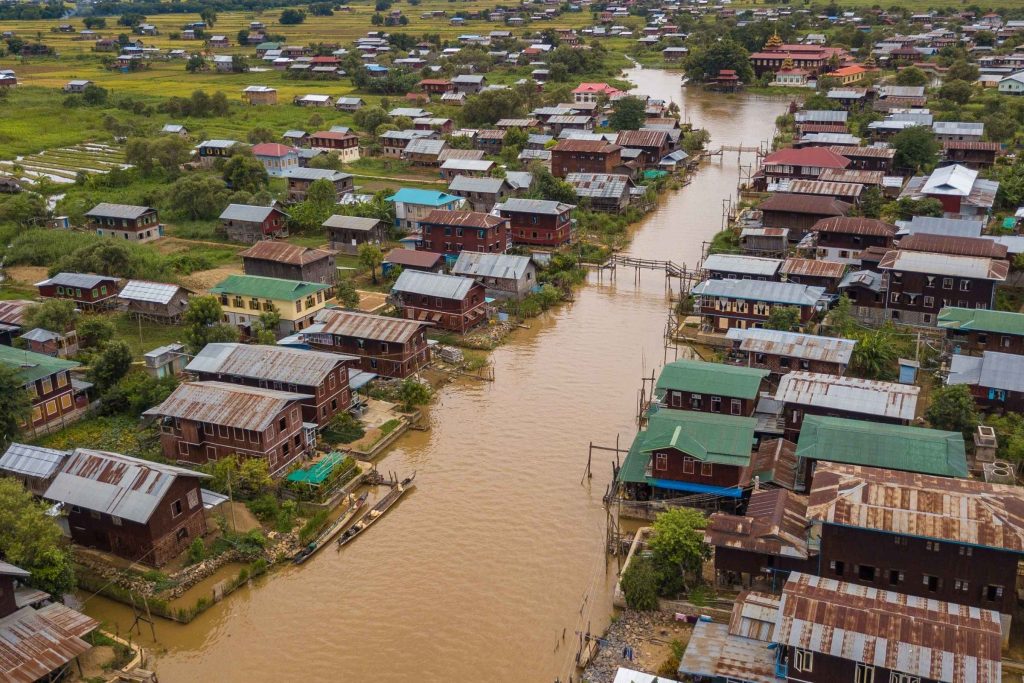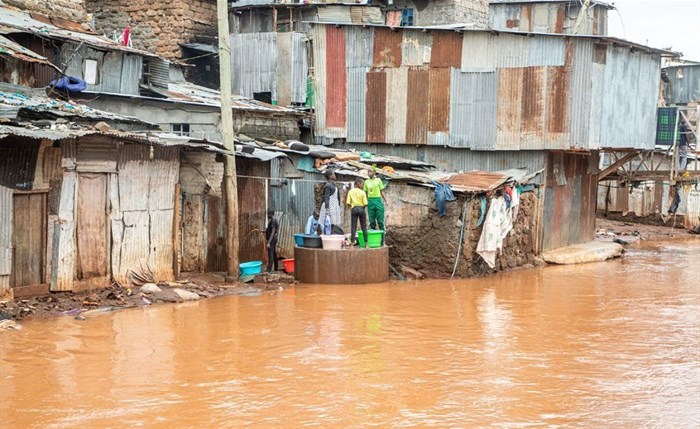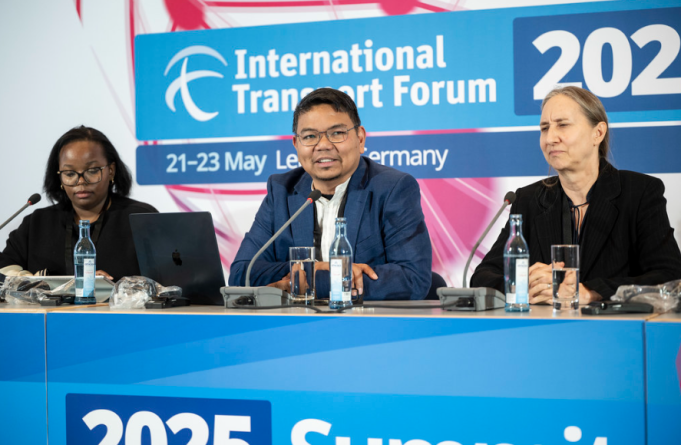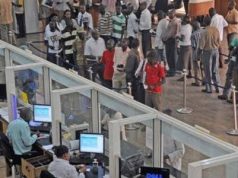Flooding in Nairobi and other cities in low- and middle-income countries has revealed deep-rooted issues in urban planning and transport governance. Despite significant investments, poor infrastructure and the exclusion of informal transport operators from policy processes continue to hinder progress. Informal systems like matatus and it play a vital role in daily mobility yet remain unsupported. Experts at the 2025 International Transport Forum emphasized the urgent need to recognize and integrate these systems into climate adaptation strategies to build resilient, inclusive urban transport networks.
Policy Gaps and Informal Sector Exclusion Hindering Transport Development
Regulatory shortcomings and the persistent exclusion of informal sector stakeholders from transport policy formulation have been cited as key factors slowing the progress of transport systems, particularly in Low—and Middle-Income Countries (LMICs) such as Kenya. Despite significant government investment, these nations continue to struggle with underdeveloped infrastructure.
This issue was prominently discussed at the International Transport Forum (ITF) 2025 Summit held in Leipzig, Germany. The summit gathered ministers, government officials, and private sector leaders to explore the future of global transport systems and investment priorities.
Nairobi’s Flood Crisis and Its Impact on Informal Transport
The recent deadly floods in Nairobi underscored the vulnerabilities of the city’s transport system. Nairobi, like many urban centers in LMICs, heavily relies on informal transport networks—minibusses (matatus), motorcycle taxis (boda bodas), and three-wheelers (tuk tuks)—which serve as the primary mode of urban mobility for residents in underserved areas. These systems, however, continue to operate without sufficient infrastructural support or planning integration.
Recurring heavy rains have consistently exposed Nairobi’s poor urban planning. Weak drainage systems, inefficient waste management, and encroachment on riparian land have worsened flood impacts, particularly in informal settlements. The consequences are severe: displacement of communities, damage to property, and tragic loss of life.

The ‘Missing Mobilities’ Report: A Call for Inclusive Climate Adaptation
A new policy report, “Missing Mobilities: The Popular Transport Gap in Climate Adaptation,” was launched at the ITF Summit. The paper highlights how urban flooding in LMICs is intensified by poor planning, a lack of technical and financial resources, and the proliferation of unplanned settlements.
The report notes:
“Recent news highlights how heavy rains in East African cities like Nairobi and Kigali render popular transport impassable—with minibusses (matatus) sometimes swept away in floods or motorcycle taxis (boda bodas) forced to reroute to avoid flooded areas. These situations cause disruptions and inconvenience, ranging to potentially life-threatening situations for commuters and service providers.”
The Partnership, in collaboration with Columbia University and other institutions, produced this report for Research on Informal and Shared Mobility (PRISM).
Recognizing Informal Transport as a Vital Urban Service
Experts at the summit emphasized the urgent need to formally recognize and integrate informal transport services into urban planning and infrastructure development. Jacqueline Klopp of Columbia University’s Climate School and the Center for Sustainable Urban Development stated:
- “They are small businesses employing many people and facilitating work and mobility for countless others. These services are vital, yet they are routinely excluded from urban planning and infrastructure decisions—even from the physical organization of cities.”
Unless policymakers prioritize the inclusion of these informal systems, cities like Nairobi will continue to experience transport disruptions and climate vulnerabilities that disproportionately affect the most marginalized populations.
Informal Public Transport: Backbone of Mobility in Developing Nations
In many low- and middle-income countries, public transport systems operate without direct government subsidies. These services are primarily run by small-scale entrepreneurs managing modest fleets of imported vehicles. Despite their informality, these transport services remain essential to daily mobility for millions.
Organizational structures in the sector vary widely. In Kenya, for example, operators are often organized into strong, union-like groups known as Savings and Credit Cooperative Organizations (SACCOs). In contrast, operators in cities like Lilongwe and Malawi tend to form more loosely affiliated groups.
A Shift in Perspective: From Problem to Partner
According to Josephine Macharia, a policy analyst at the International Transport Forum (ITF), informal transport should not be seen merely as a challenge in climate adaptation efforts but rather as a potential partner in building urban resilience.
- “You have to think about how you can work with them,” Macharia said. “These operators are already making efforts to maximize returns on their investments. To support them and improve outcomes, investments must also go into better roads and infrastructure. If you want to see the full benefits of these investments, inclusion of informal operators is essential.”
Macharia emphasizes the need for these sector players to be actively involved in climate research, policymaking, infrastructure planning, and financing initiatives.
Benji De La Peña, CEO of the Shared Use Mobility Center in Chicago, echoes this sentiment. “As governments channel massive investments into major infrastructure projects, it’s crucial to account for the needs of both service providers and the populations they serve,” he said. “There’s a lot of work ahead.”

Building Climate Resilience in Urban Transport
To mitigate the impact of flooding in Nairobi and other urban centers, Kenya has been urged to adopt a multi-pronged strategy. This includes:
- Upgrading drainage systems
- Restoring natural ecosystems
- Implementing early warning systems
- Enhancing urban planning
- Providing relief and support for affected communities
- Securing climate adaptation financing
While Nairobi City County has previously pledged to address these issues through policy reforms, infrastructure upgrades, and public engagement, the city remains vulnerable. Ensuring lasting resilience will require consistent effort, investment, and inclusive planning.
FAQ’s
Why is flooding such a significant issue in cities like Nairobi?
Flooding in Nairobi is primarily due to poor urban planning, inadequate drainage systems, and encroachment on natural waterways. Rapid urbanization without corresponding infrastructure upgrades has worsened the situation.
How does flooding affect informal transport systems?
Floods severely disrupt informal transport operations like matatus, and tuk-tuks by damaging roads, flooding routes, and endangering vehicles and passengers, especially in low-income areas.
What role does the informal transport sector play in urban mobility?
Informal transport is the backbone of mobility in many low- and middle-income countries, providing daily transportation for millions, particularly in underserved areas where formal systems are limited or absent.
Why are informal transport operators excluded from planning processes?
Due to their informal nature, these operators often lack regulatory recognition and structured representation, making it difficult for policymakers to include them in planning and funding decisions.
What solutions were proposed at the ITF 2025 Summit?
Experts called for integrating informal transport into climate adaptation and urban planning, improving infrastructure, restoring natural ecosystems, and securing adaptation financing to build more inclusive and resilient transport systems.
Conclusion
Flooding in cities like Nairobi reveals the urgent need for inclusive, forward-thinking urban planning. Informal transport systems are vital to urban life but remain excluded from infrastructure and climate policies. Without recognizing their role, future investments risk leaving millions vulnerable to disruption. As highlighted at the ITF 2025 Summit, the path forward must include collaborative solutions that strengthen infrastructure, engage communities, and integrate informal operators into policy and planning—ensuring urban mobility systems that are both resilient and equitable.






